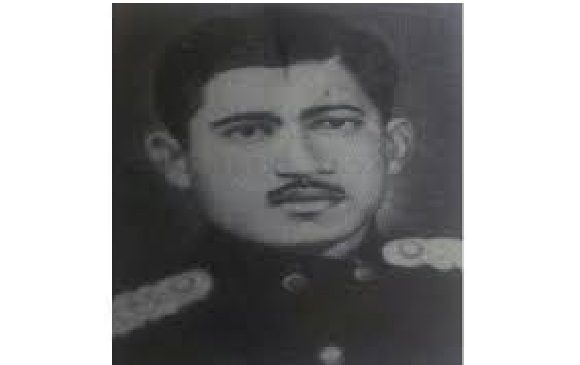
Service No : IC-8423
Date of Birth : January 16, 1936
Place of birth : Kolkata Dist (WB)
Service : Army
Last Rank : Captain
Unit : 1 Sikh
Arm/Regt : The Sikh Regiment
Operation : Indo-China War 1962
Awards : Maha Vir Chakra
Martyrdom : October 20, 1962
Captain Mahabir Prasad MVC
Captain Mahabir Prasad was born on 16th January 1936 in Kolkata, West Bengal, to Shri Indar Prasad. From a young age, he exhibited qualities of discipline, leadership, and a deep sense of duty—traits that would later define his military career. Driven by a strong desire to serve the nation, he joined the Indian Army and was commissioned as an officer on 9th June 1957. He was inducted into the 1 Sikh Battalion of the Sikh Regiment, one of the oldest and most decorated regiments of the Indian Army, renowned for its gallantry, sacrifice, and distinguished service on the battlefield.
By 1962, after nearly five years of dedicated service, Captain Mahabir Prasad had earned the admiration of his superiors and comrades for his professionalism, courage, and unwavering commitment to duty. Around this time, the situation along the Indo-China border had begun to deteriorate rapidly, culminating in the outbreak of the Sino-Indian War in October 1962. Captain Prasad’s unit was deployed to the North-East Frontier Agency (NEFA), in the region that is now Arunachal Pradesh, to defend India’s territorial integrity against Chinese aggression. Despite the harsh terrain, extreme weather, and logistical challenges, Captain Prasad led his men with determination and courage, fully aware of the gravity of the situation and the importance of their mission in safeguarding the nation’s borders.
Indo-China War (Namka Chu Battle) : 20 Oct 1962
Namka Chu was a narrow gorge situated to the east of the remote tri-junction of Tibet, Bhutan, and India. It lay approximately 200 kilometres from the railhead at Misamari and about 60 kilometres from the roadhead at Tawang, making it an isolated and logistically challenging area for military operations. The Nyamjang Chu river flowed southward from Tibet into India at Khinzemane, where it met the Namka Chu about one and a half miles downstream. Local herders of the region had long used a series of seven improvised wooden bridges to cross the Namka Chu while grazing their cattle in the high-altitude meadows. Dominating this valley was the formidable Thagla Ridge, running from west to east and overlooking Namka Chu. The ridge featured four major passes — Dum Dum La (17,000 feet), Karpola II (16,000 feet), Yamatso La (16,000 feet), and Thag La (14,000 feet). The core of the territorial dispute between India and China centred around this very ridge. While the Chinese maintained that Thagla Ridge lay north of the McMahon Line and therefore within Tibet, India asserted that it was on the Indian side of the border. To assert India’s claim, an Assam Rifles post was established at Khinzemane in 1959. The Chinese objected strongly and soon sent a force of about 200 soldiers to push back the small Indian contingent, which was compelled to withdraw towards the bridge on the Nyamjang Chu at Drokung Samba — the point the Chinese insisted was the McMahon Line. However, once the Chinese troops withdrew, the Indian forces reoccupied their original positions, keeping the situation tense but contained for the time being.
The fragile calm was shattered in October 1962. Tensions at Namka Chu escalated into open hostilities on 10 October 1962, marking the beginning of the India–China war. Over the following days, the situation worsened rapidly. On 20 October at 5:14 a.m., the Chinese launched a massive artillery and mortar bombardment on Indian positions at Namka Chu and Tsangdhar, using nearly 150 guns and mortars to soften the defences before an infantry assault. Captain Mahabir Prasad of 1 Sikh Battalion, who had been attached to 1/9 Gorkha Rifles, was deployed in this sector. Displaying exceptional courage and leadership, Capt Mahabir Prasad rallied his men under heavy enemy fire and led the defence of his position with determination and grit. Later that evening, approximately 500 Chinese troops attacked the Indian positions with overwhelming force, supported by heavy artillery, mortars, and medium machine guns. Despite being heavily outnumbered and outgunned, Capt Mahabir Prasad and his men fought with extraordinary valour, inflicting significant casualties on the advancing enemy. However, during the intense battle, both Capt Mahabir Prasad and his comrade, Lt Mahindra, were grievously wounded. Their courage under fire and steadfast commitment to their duty became emblematic of the gallantry displayed by Indian troops during the opening phase of the 1962 conflict. Capt Mahabir Prasad was "Killed In Action" and was awarded the nation’s second highest gallantry award "Maha Vir Chakra” for his outstanding courage, leadership and supreme sacrifice.

K S Sridharan
2025 at 12:26 pmHeroic battle appreciated but the jnit could have moved onto higherpositikm like hatungla
Parthsarthi Kamde
2025 at 12:27 pmJai hind
Dhiraj.p
2025 at 12:27 pmIam saluting for the supreme sacrifice of captain mahabir prasad to our mother land.
Kehar Chand Rana
2025 at 12:28 pmA thousand salute to the brave soldier.